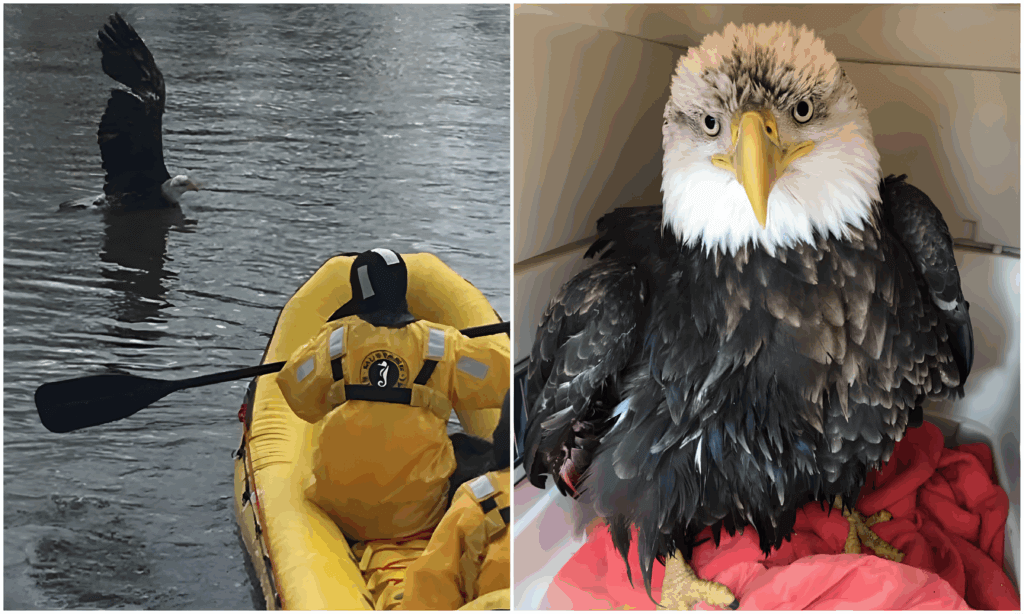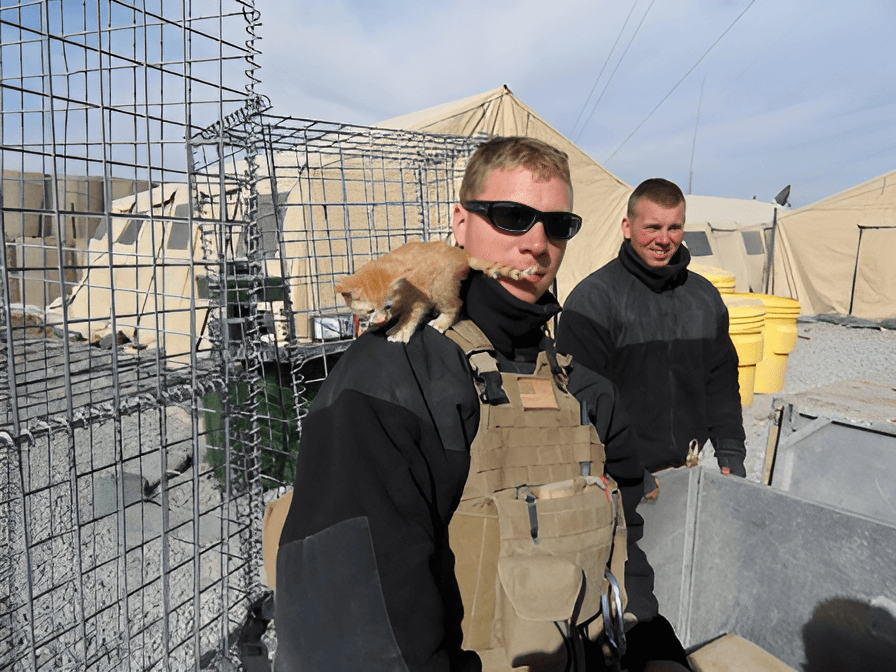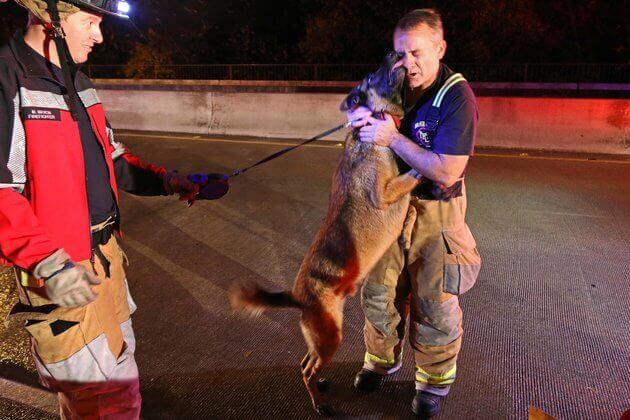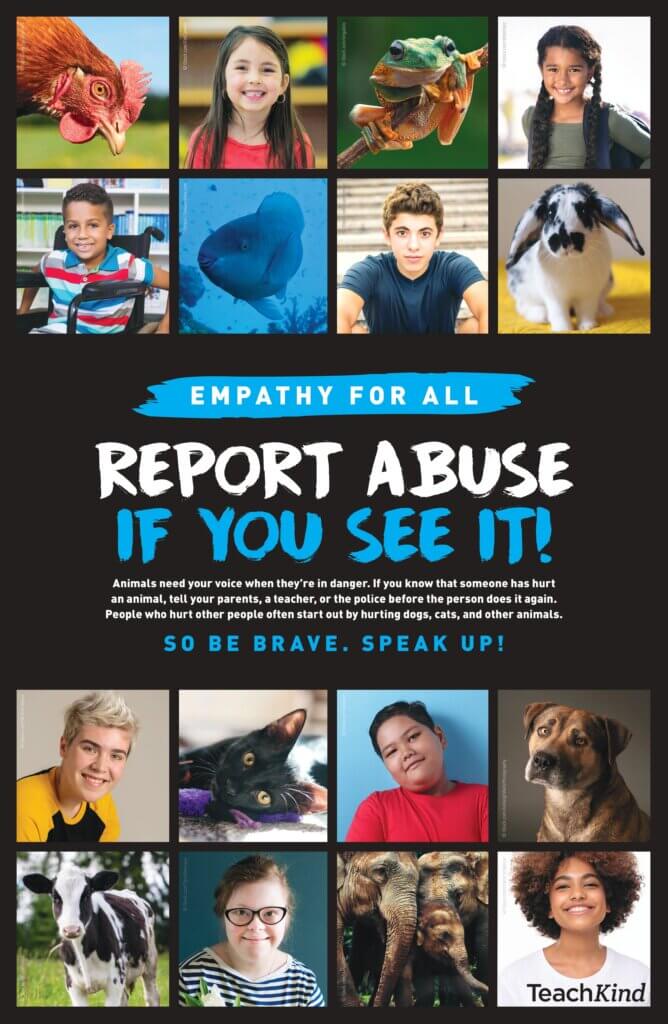Community Helpers Can Be Heroes for Animals, Too!
It takes a village … to run a village! Teaching your students about the importance, responsibilities, and unique contributions of different roles within a community is a fun way to meet common core standards and review basic skills as well as helping children understand how different professions make a community function. As you discuss various types of jobs and the roles that those doing them play in the community (e.g., construction workers build the buildings that we live in and doctors and dentists keep us healthy), take the opportunity to highlight the ways in which these community helpers can (and do!) help animals, in addition to helping the humans in the community. For example, police officers and firefighters are responsible for protecting us from harm or helping us if we’re in danger—so it makes sense that they often go out of their way to help animals, too!

Share the following inspiring stories about community helpers—from police officers and firefighters to electricians and government workers—who have used their positions to help animals as well as people.
Community Helpers Saving Animals
- The members of the Abingdon Volunteer Fire and Rescue team in Virginia were called to a house fire, and at first, they were thankful, because it looked as though no one was home. But when next-door neighbors let them know that there were two dogs trapped inside the house, they jumped into action. One of the dogs, Roxy, was buried under a pile of broken furniture and barely alive—but she made it through, and so did her sister Daisy. These firefighters saved their lives!
- When a 4-year-old bald eagle’s wing became entangled in fishing line near the shore of the Minnesota River, firefighters with the Mankato Department of Public Safety used a rescue boat to reach the eagle and save him. They cut the fishing line, pulled the bird from the water, and rushed him to a special veterinary clinic, where he received treatment for his injuries.

- When a dog named Phelps was found struggling in a lagoon in Wisconsin, police officers with the Milwaukee Police Department pulled him out at the water’s edge. But then, Phelps jumped back in and swam to the center of the lagoon, where he started to struggle—he was tangled in weeds and fishing line. But one of the officers came to his rescue a second time: He jumped into the water, swam through the muck to free him, and pulled him back to shore. These police officers saved Phelps twice in a row!
- A family got into a car accident in Vail, Colorado, that flipped the vehicle upside down. When firefighters got there, they were told by the young boy in the car that his turtle (named Turtle) was still in the car and that he was very worried about him. The firefighters searched and searched for Turtle, and eventually, they found him—but he was frozen in his terrarium water. However, the firefighters didn’t give up on him. They used lukewarm water to revive him, and he was reunited with his family.
- A police sergeant was dubbed the “fox whisperer” after he and another officer freed a fox who was entangled in the nylon netting of a soccer goal on the grounds of a school in Pennsylvania. It took a few minutes to carefully cut the netting from the animal’s leg and tail, and then he ran off and turned around once to look at his rescuers before disappearing into the distance. The process was recorded on bodycam video and showcases the “animal voice” that the sergeant used to help calm the fox during the rescue. This officer’s actions are a powerful reminder that when it comes to rescuing an animal, it’s important to do everything you can—even if that means using an “embarrassing” voice to calm them.
- You don’t need to be a police officer or a firefighter to save animals. When a cat named Juno fell out of her guardian’s van and went missing on Christmas Day, her worried family canceled their holiday plans to search for her. They put up “missing” posters and searched for days, but they couldn’t find her. Nine days later, electricians spotted a cat hiding on a metal beam 80 feet above the ground and recognized her from the posters—so they bought some cat food, lured her into a worker’s arms, and safely lowered her down. They reunited Juno with her family the next day.
- A family of ducks was discovered nesting on the sixth-floor balcony of the Library of Congress in Washington, D.C. There was no water source on the balcony, and the ducklings were in danger of falling off the building, so library employees and others helped police get the mother duck and her ducklings into boxes. They were taken to the Capitol Reflecting Pool, where the Architect of the Capitol workers built a ramp for the ducklings.
- A man named David Rooks and his dog, Petey, were trapped inside their car in Colorado after rushing water suddenly flooded a creek and stranded them. The Florence Fire Department Swift Water Rescue Team arrived to help both David and Petey. The fire chief used a ladder truck to reach them and bring them to safety, ensuring Petey was comfortable—and he even visited them both a few days after the rescue.
- A horse named Lucky in Eagle, Idaho, found himself in trouble when he escaped from his enclosure, wandered down the street, and then fell through the ice into a backyard swimming pool. Neighbors discovered Lucky, and firefighters arrived at the scene and used chainsaws to cut a pathway through the ice. After guiding him out of the pool, rescuers used blankets and straw to warm him up. After the veterinarian confirmed that he was healthy, he was taken back home to his stable.
- A squirrel in Enfield, Connecticut, got her head stuck inside a plastic yogurt cup and was struggling to free herself. Thankfully, two paramedics worked together very gently to free her—and they likely saved her life.
- A dog named Tommy fell through the ice after chasing a bird onto Lake Waban. After his guardian, Ed, attempted to rescue Tommy and also fell into the water, Wellesley firefighters responded to the scene and used a drone to monitor the situation. Despite the wind chill being well below freezing, firefighters wearing special ice-rescue suits jumped into the lake and pulled Ed and Tommy to shore. Both were treated for hypothermia before being safely reunited at home.
- In Ontario, Canada, two paramedics spotted a skunk with a cup stuck on his head as they pulled into their station’s parking lot and rushed to help him. To avoid being sprayed by the skunk—who was very scared—one paramedic wore a protective suit and spoke softly to the animal to get close enough to remove the cup and set him free.
- Two marines in the U.S. Marine Corps noticed some homeless cats hanging around their base in Afghanistan, so they took the animals in and nursed them back to health, allowing the cats to sleep with them in the barracks. Then, they arranged for the animals to be transported to the U.S. to live with their families. Thanks to these marines, these two lucky cats, now named Kiki and Keykey, have been rescued.

- A man and his dog, named Duke, were trapped in dangerous rising floodwaters in McKinney, Texas, and the man called 911 from a tree. The firefighters arrived and rescued both with a long ladder. As shown in the picture below, Duke the dog jumped up and thanked his rescuer with a big “kiss.”

- A great horned owl was tangled in a broken kite near the Jackson Township Fire Department in Ohio, and he was exhausted from trying to free himself. A police sergeant saw the owl in distress, and firefighters stepped in to remove the kite from the bird’s wing. The owl was taken to the Stark Parks Wildlife Conservation Center, where he received treatment for his injuries.
Activity: Community Helpers in Action
Have students choose any type of community helper. On a sheet of paper, have them write at the top “A [police officer, nurse, teacher, firefighter, etc.] helps animals.” Then ask them to write a sentence (or more) describing how this community helper can help animals. Beneath the sentence, have the students draw a picture of their community member of choice helping an animal in some way. Ask them to draw inspiration from the stories you discussed as a class about the different ways that people have helped animals in need.
Once the students have finished their drawings, have them take turns sharing their pictures in front of the class and describing how the community helper is helping an animal in the image.
Discussion Questions
After discussing each anecdote and viewing the corresponding videos and photos as a class, ask students the following questions and either discuss their responses aloud or have them write down their answers:
- Can you think of any jobs that directly help animals every day? (Veterinarians, animal control officers, animal shelter workers)
- Can you still help animals if you have a job that normally helps humans? (Of course! Anyone can help animals—and everyone should.)
- What are some things that you can do to help keep animals safe? (Never litter, since litter can hurt animals, and take good care of your animal companions at home.)
Remember: Kids Can Help Animals, Too!
Explain to your students that while grown-ups and professionals have a responsibility to help animals, anyone—even kids—can be a community helper for animals by looking out for ones in need. Explain that if students ever see or hear of an animal in danger, they should tell their parents, a teacher, or another adult immediately.

Also, tell students that they can protect wildlife by never littering and by properly disposing of trash, such as by keeping all garbage in tightly sealed, chew-proof containers. Other helpful actions they can take to prevent animal emergencies include rinsing out aluminum cans and putting the tops inside so they can’t cut an animal’s tongue, crushing cans and cups, and opening empty cardboard and plastic containers before recycling them to stop small animals from getting their faces or heads trapped inside, as some animals in these rescue stories have done.
Want to continue inspiring your students to help animals?
Order TeachKind’s free Share the World curriculum kit designed for primary school students!

